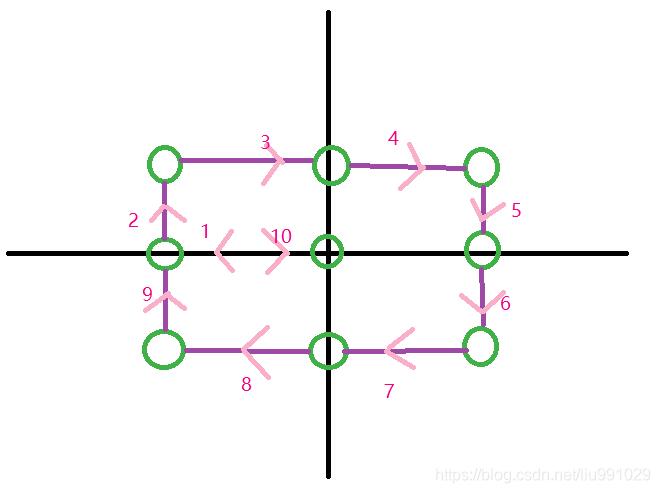本文实例为大家分享了C#实现窗体抖动的具体代码,供大家参考,具体内容如下
原理:围绕中心点运动一圈

方法一:通过线程实现
需求:需要using System.Threading;命名空间和button按钮以及for循环
具体代码如下:
using System;
using System.Collections.Generic;
using System.ComponentModel;
using System.Data;
using System.Drawing;
using System.Linq;
using System.Text;
using System.Threading.Tasks;
using System.Windows.Forms;
using System.Threading;//添加线程
namespace Test_Window_jitter
{
public partial class Form1 : Form
{
public Form1()
{
InitializeComponent();
}
private void Form1_Load(object sender, EventArgs e)
{
this.Location = new Point(Screen.PrimaryScreen.WorkingArea.Width/2-this.Width/2,Screen.PrimaryScreen.Bounds.Height/2-this.Height/2);
button1.BackgroundImage = Image.FromFile("../../img/1.jpg");
button1.BackgroundImageLayout = ImageLayout.Stretch;
}
private void button1_Click(object sender, EventArgs e)
{
int x = this.Left;
int y = this.Top;
for (int i = 0; i < 3; i++)
{
this.Location = new Point(x - 3, y);
Thread.Sleep(10);//设置执行完上一步停留时间
this.Location = new Point(x - 3, y - 3);
Thread.Sleep(10);
this.Location = new Point(x, y - 3);
Thread.Sleep(10);
this.Location = new Point(x + 3, y - 3);
Thread.Sleep(10);
this.Location = new Point(x + 3, y);
Thread.Sleep(10);
this.Location = new Point(x + 3, y + 3);
Thread.Sleep(10);
this.Location = new Point(x, y + 3);
Thread.Sleep(10);
this.Location = new Point(x - 3, y + 3);
Thread.Sleep(10);
this.Location = new Point(x - 3, y);
Thread.Sleep(10);
this.Location = new Point(x, y);
}
}
}
}
方法二:通过计时器实现
需求:timer控件,button按钮,for循环
具体代码如下:
using System;
using System.Collections.Generic;
using System.ComponentModel;
using System.Data;
using System.Drawing;
using System.Linq;
using System.Text;
using System.Threading.Tasks;
using System.Windows.Forms;
namespace Test_Window_jitter
{
public partial class Form2 : Form
{
public Form2()
{
InitializeComponent();
}
private void Form2_Load(object sender, EventArgs e)
{
this.Location = new Point(Screen.PrimaryScreen.WorkingArea.Width / 2 - this.Width / 2, Screen.PrimaryScreen.Bounds.Height / 2 - this.Height / 2);
}
private void button1_Click(object sender, EventArgs e)
{
timer1.Start();
}
private void timer1_Tick(object sender, EventArgs e)
{
int x = this.Left;
int y = this.Top;
for (int i = 0; i < 10; i++)
{
this.Location = new Point(x - 10, y);
this.Location = new Point(x - 10, y - 10);
this.Location = new Point(x, y - 10);
this.Location = new Point(x + 10, y - 10);
this.Location = new Point(x + 10, y);
this.Location = new Point(x + 10, y + 10);
this.Location = new Point(x, y + 10);
this.Location = new Point(x - 10, y + 10);
this.Location = new Point(x - 10, y);
this.Location = new Point(x, y);
}
timer1.Stop();
}
}
}
看完记得点赞,下期更精彩!